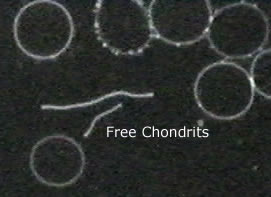Reflections and Magnifications |
m | ||||||||||||
Posted to Subscribers on 1 October 2011 |
|||||||||||||
|
|
Dear Subscribers, Tired wasn't the word for it. I really got up late this morning but I was just thinking how the internet can be a reflection of our minds. Odds and ends of bytes whiz in front of our eyes and may or may not find a resonance in our perceptual mechanisms. We think we don't file these impressions, but once we collect enough random flashes, we begin to create folders for them and to organize the bytes in meaningful ways and finally, a day comes when we have enough pieces of the whole to begin to see how the bigger picture is going to look. Memory works by the power of association so an odd exposure here and another there may not get much attention, but once the memory banks start to fill up and associate, you can make sense of the whole. My effort to connect dots was very time consuming and it uncovered the lowest of the low in terms of human sociopathy. If you are curious and want to go there, the door is open. If you just want to be safe and well, I think the first step is accepting your innocence because no one did anything to deserve the kind of suffering that Lyme disease causes. Moreover, for countless medical doctors to misdiagnose Lyme as syphilis or to insist that the disease only requires three weeks of treatment simply adds to the misery and confusion. Some of you know and others apparently do not that one of my web sites is darkfieldstudies.com. It is suffering from neglect because I hired a nerd to create it as an interactive site but I haven't mastered the instructions on how to manage the site. That's the excuse but let me tell a different story instead. Darkfield I first heard about darkfield via some audio cassettes of a radio broadcast. That was back in the 70s, and I remember the occasion vividly. I was living on the Big Island of Hawaii and realized that important information was being suppressed at the expense of everyone who ever had any disease at all — i.e., most of us as well as animals. It never occurred to me at the time that similar microscopes to those used by Royal Rife still exist. They are not "similar" in the sense of being so ingenious, but they are capable of facilitating observation in darkfield. The darkfield microscope is, for all intents and purposes, just a microscope. Making use of such scopes difficult to impossible would be the equivalent of telling people not to use binoculars or telescopes when looking at the sky. Why? The only risk is that you might push the limits of your understanding just a bit beyond their present frontiers, but progress is about going somewhere the mind has not been before. I bought a 14 megapixel camera with a macro feature to take pictures of bees and butterflies but when I tried to fine tune the images, I discovered a new world of flowers. When you enlarge the inside of a flower to the full size of your computer monitor, the view is dazzling, fascinating, complicated, amazing, beautiful, and humbling. Watching live blood is a bit the same.
One night, I was listening to a Viennese New Year's concert on the radio and a white blood cell began waltzing. It was absolutely amazing. Impulsively, I phoned Gail. I wanted to share this with someone who would appreciate the observation. She asked, "Are you all right?" I said, "I'm fine but my white blood cell is waltzing." Long story short, I had phoned her without looking at the clock or factoring in time differences. It was three in the morning so she was a bit too groggy to share in my excitement. That's the story of my life . . . but another day! We had actually done some experiments. As you all know, I love music but I especially love music in E-flat. I don't honestly know why but it reaches a part of my psyche that is soothed by it and I think it must correlate to Sagittarian lunar energies but I can't prove this. Years and years ago, Gail composed a piece for me for as a birthday present. I love it and wanted to play it for my spider bite blood drama. We tried putting headphones on a microscope stage and doing all sorts of things, but the blood doesn't need this kind of direct connection. It can obviously hear just fine or perhaps it doesn't have ears but just feels the vibrations? One of the patients in Europe was a musician. Just before I saw her, a former student had dropped by and given me a new CD of a performance by someone she has promoted for years. I decided to play this for the breast cancer patient. We didn't have a lot of options, just one CD, but she chose a piece by Chopin and I used a high magnification objective so that her white blood cells were enormous on the computer monitor. What we saw was that the white blood cells were happy and swam along with the music until the tempo picked up and they just stopped. So, at that point, I had to ask for her birth data. She had a Taurus Moon and had just come off chemotherapy and all that preceded it. She didn't have hair and her situation was precarious, not the best time in her life, but it might actually have been the turning point for her. It was so obvious that the immune system was functional but tired. If it were allowed to do its work without pressure, it could even do this happily, but if forced beyond its capacity, it would just quit. That patient is fine now. Life goes on. I just have a promise to keep because I told her I would teach her how to do music therapy and one of us now has to cross an ocean to do this. In previous posts, I have said that the blood is sentient. When I poured a cup of coffee just now, I was asking myself how to explain this and what came to mind is that we could go to zoo with the intent of finding just one zebra with a specific stripe that was unique enough that we could pick him out of a herd of zebras and recognize him every time the zebras shifted around and confused us. However, we could also go to the zoo and just watch the zebras and see what the do, how they interact with each other, or whether we can get one to pose for us. If we get really hooked on zebras, we could go on a safari and if that changed our priorities in life, we could become a wildlife photographer specializing in zebras. This is kind of what darkfield microscopy is.
In a normal microscopy exam, the pathologist is looking for one specific something or other, maybe the treponema spirochete that causes syphilis. He is so intent about this that he doesn't notice anything else. Actually, the truth is even worse than this because sometimes the microscope is programmed to scan and there is very little human observation at all and sometimes the person scanning is a student, not a pathologist, and the student might not even be a biology major. Many darkfield microscopists are also still at the zoo which is why I have called what I do by a name I invented, one that suggests I am kind of like an anthropologist who wants to explore the inner world of blood cells so I am basically a blood behaviorist.
It is also obvious that the social order is matriarchal and the supreme leader is a very wise lady with boundless caution and compassion. The red blood cells are often sort of adolescent in behavior and they have groups and gangs and they can be mischievous. I can give you examples of this so you don't think I am totally crazy. The doctor in the clinic where I was first conducting these studies felt that if I found parasites so easily, it was simply because we were using samples taken from peripheral blood. I asked him why he thought this. He said the blood would be moving so fast and furiously in major arteries that it would be annoying to the parasites. I was thinking, "I wonder if the social behavior I was observing would also be affected by the speed?" In any event, his thesis was very easy to test because they were doing oxygenation of the blood and were transfusing blood back into patients after exciting it with oxygen or ozone. There was no shortage of samples and all we needed was one drop. The parasites were there in samples from arteries as well as lymphatic fluid from swollen legs and tiny drops from ear lobes. In short, if it circulates, it is systemic. Okay, most of you aren't interested in this but I have looked at hundreds of samples, not thousands like the doctor, but hundreds. However, the difference was that he was taking pictures at the zoo and where I was, the language being heard was Swahili. In fact, that was almost true. Five patients had matching parasites and though the first two were obvious since they had actually lived in Kenya, to understand the next three would require some discussion. It was quickly found that these three had also been to Africa, Mombasa to be exact. Because I had no background in hematology, I had to read a lot of books. These would say that the white blood cells live only a few days. I decided to test this theory and actually believe that white blood cells are potentially immortal. On a slide, there are variables that do not exist inside the body. The light on the microscope is blindingly bright. Royal Rife had major eye problems towards the end of his life. I have to feed the image to a monitor to save my eyes. Secondly, there are no arteries so all the conditions are different and the blood is in shock when it finds out where it is. The slide and stage are cold. So, you expect to see some pandemonium at first, with all the adrenal fight or flight issues played out: some blood is still (fright) and some is moves wildly. However, because of my interest in Ayurveda, I wanted to create perfect plasma and then watch. Under such conditions, the white blood cells remain viable so long as there is moisture. I have been able to create enough moisture to keep them alive for seven weeks which is way longer than their life expectancy. In short, by restricting use of these microscopes, we are not only blocking discovery but giving rise to a lot of youtube nonsense about what is and what is not a spirochete. I am not going to send you links to the nonsense videos but suffice it to say that even medical doctors and research facilities appear to be making mistakes in identification. This, of course, could lead to overdiagnosis. The borrelia spirochete looks like a corkscrew and is 2-3 times longer than a red blood cell is wide. I have seen lots and lots and lots of pictures in textbooks and online but never seen one in a patient, but I was seeing people in Europe, not Connecticut. http://www.textbookofbacteriology.net/Lyme.html
Lyme disease is a big subject for me and explains why it has taken a few years to get to this point in the essays. I started darkfieldstudies.com to make a statement about how really ignorant it is to limit use of darkfield microscopes. The view in darkfield is kind of like a photo negative. The light is deflected so instead of coming straight through the condenser, it is angled in from the sides in a manner that illuminates the edges of objects that are invisible in brightfield. They are invisible because they are washed out by the light. So, by redirecting the light, one sees silhouettes and I cannot think of a single reason for restricting the use of this technique to syphilis testing. This said, both Royal Rife and Gaston Naessens went through horrific ordeals and our government continues this suppression to this day . . . except if only looking for a treponema and doing so with the same tools and attitude as the chap looking for the zebra with the specific stripe. Avanti! Later today, I will try to assemble a page of links to all my essays about plasma and spirochetes. However, the next post will be about guaiacum. It is an ingredient in several herbal formulas and I am about to introduce a few more. My Seneca Elixir has guaiacum. It was the first herbal product in my product line which now has about 150 products. It was recreated from historic work by Dr. Eli G. Jones who bequeathed the formula to his fellow physicians after attributing 80% of his success to this one formula that he called Compound Syrup Scrophularia. Now, we have to go full circle. Scrophularia is the figwort about which I have written several posts with reference to bees. Guaiacum is very potent and like many resinous substances, it smells a lot better than it tastes. At this time, what I might say by way of a preface is that my clinical experience with Seneca is that it happens to be an excellent parasiticide. So much of what we believe about herbs is based on what we read; but in darkfield, it is easy to see parasites as well as what kills them. Since a lot of parasites affect lymphatic flow and can eventually harm the delicate valves in the lymphatic ducts, it stands to reason that a good lymphatic drainage formula might also be a parasiticide. In any event, Seneca is both. The other formula in my line that contains guaiacum is also based on the work of others. In this case, Spiro Pro is the work of Stephen Buhner but even his formula is based on half a millennium of studies by others! That is not long by herbal standards. We are still using herbs and formulas that the pharaohs used so our progress is in our appreciation and understanding, not the "science" of modern medicine. Last night, I added guaiacum and teasel as individual extracts and in a few days, I will be introducing two more forms of guaiacum. Meanwhile, the essays will continue. Many blessings, Ingrid
Copyright by Ingrid Naiman 2011
|
||||||||||||
Home || Contact Us |
|||||||||||||
No content on any of the pages of this web site may be reproduced without written permission of Ingrid Naiman and Seventh Ray Press, publisher of this site. |
|||||||||||||
|
|||||||||||||







